
Wine Culture and Information since 2002 - Volume 22
 Wine Culture and Information since 2002 - Volume 22 |
|
Wine FaultsQuality of wine is also determined by the absence of faults, an essential condition for every great wine |
|
Even though wine making technology allows the production of quality wines, sometimes it can be possible to find some faults that can compromise in a relevant way both the evaluation and quality. Talking about faults in wines, even serious ones, can be seen nowadays as a rather unusual subject as it seems to happen less and less frequently, however a wine taster should be able to recognize the many faults, at least the most common ones, and subsequently determining the quality of wine. Quality of wine, as it is clearly and obviously known, is also defined by means of the absence of faults and, in particular, with the presence of all those factors that promote quality.
|
|
Finding a wine which has faults in its aspect is nowadays rather rare. Thanks to the modern and proper wine making practices, wines produced are limpid and crystalline, with a total absence of “substances” or conditions that would compromise its aspect. It can be said that certain faults and certain wine diseases that could seriously compromise wine's aspect and its aesthetical pleasantness have practically disappeared, their presence in wine, besides being a rather exceptional fact, are also the sign of an approximate and coarse wine making. A wine, that can be considered of quality at least in its aspect, must always be limpid and the presence of suspended particles is always and however a negative factor that compromise its quality. However it must be remembered that sometimes the presence of suspended particles in the bottle, never in the wine glass, is to be considered as normal and do not compromise wine's quality in anyway. Sometimes can happen that a layer of sediment can develop in the bottom of the bottle and this usually is to be considered as a natural consequence or reaction related to specific events. In red wines, particularly the ones which are destined to a long aging and rich in tannins and extracts, it is absolutely normal that in the bottom of the bottle can be found some sediment and they are formed by polymerized tannins and, by getting more and more heavier and less soluble, they finally deposit to the bottom. This cannot be considered as a fault because, besides being absolutely a natural consequence of the aging of such wines, a proper decanting will give a perfectly limpid wine. Another factor that can be cause of sediment is related to the precipitation of the so called “tartrates”, which can be mainly found in white and rose wines, and is caused by a thermal shock as a consequence of a sudden and prolonged cooling of wine. The deposit of tartrates can be recognized by the presence of transparent crystals on the bottom of the bottle, pretty heavy, and they will hardly be in suspension in wine. No matter this is a “forgivable” fault, the precipitation of tartrates is however a factor that compromise the aesthetical pleasantness of wine and therefore must be avoided. Causes that really compromise the aspect of wine, particularly wine's limpidity, are all related as a consequence of a scarce stabilization of wine or because of refermentations occurred in the bottle. This phenomenon is rather rare to find, however there are cases where it can be still found. This condition is mainly originated by two distinct causes: alcoholic refermentation and malolactic refermentation, both occurred in the bottle. Alcoholic refermentation in bottle takes place when the wine is bottled when it is not perfectly stabilized and it still contains some non fermented sugar. Malolactic refermentation is instead caused by the presence of microorganisms which transform malic acid into lactic acid. Both phenomena can make wine turbid because, in case of alcoholic refermentation, saccharomyces transform sugar into alcohol, and as a byproduct, carbon dioxide, whereas in case of malolactic refermentation, lactic bacteria transform malic acid into lactic acid and, as a byproduct, carbon dioxide. In both cases, at the end of the refermentation, microorganisms die and deposit to the bottom of the bottle and they can be recognized as a grainy and sandy layer making wine turbid. In both cases the wine, besides being cloudy or turbid, according to the origin of the phenomenon, also has some slight effervescence. There also are other causes which compromise wine's appearance, such as the so called “casse” (breaking) and other diseases which are now very rare and therefore very, if not impossible, hard to find. Another fault that can be detected in wine's appearance is the wrong correspondence of its color, showing brownish colors both for white wines and red wines, which is the sign of a strong oxidation or a condition of wine's life that passed its best state and it is not pleasing to drink anymore, in other words, a wine which is very old and died. The cause for this fault is to be found in the bad keeping of bottles or because wine was aged for too long in bottle. In this specific case it is more likely that wine, besides not being pleasing at sight, is also disgusting both at mouth and nose. Moreover it should be noticed that oxidation, when it is found in young wines, is a grave fault that can be originated by producer's negligence in keeping.
|
||||
|
As opposed to wine's appearance faults, olfactory faults are more frequent and, in case they are present, they seriously compromise wine's quality. Among the main and most feared ones which affect wine's aromas, there is the so called “corky smell”, a fault that affects about 5-7% of the total quantity of wine sold and is exclusively found in bottles sealed with corks. This fault develops because of 2,4,6--tricloroanisole, or simply tricloroanisole, abbreviated as 246--TCA or TCA, which can be found in some corks as a consequence of causes hardly foreseeable. Describing corky smell is rather hard, however once this smell is detected for the first time it is rather hard to forget. The smell of this fault can be described as a set of odors that can resemble mold, wet cardboard or newspaper and putrefying organic substances. Corky smell is certainly the most common and recognizable olfactory fault, however there also are other faults, to be honest not very common because of the modern wine making techniques, and it is however important being able to recognize them when present in wine. The origin of these faults is related to organic chemistry and therefore the explanation of such chemical phenomena responsible for these smell is not covered by this article. It must be however noticed that some bad smells, and therefore olfactory faults, when are present in small quantities can be considered as pleasing to some individuals and, in this specific case, it seems to be true the renowned Latin saying “De Gustibus Non Est Disputandum”, there is no dispute about tastes. Moreover it should be remembered that perception of any smell, and therefore of any fault, is subjective and also depends by the minimum threshold of perception of every individual. The following list mentions the most common olfactory faults, as well as the cause which originate them and the characteristics that allow their recognition.
|
|
Faults that can be found is wine's taste are usually anticipated by olfactory analysis: a wine having bad smells will certainly and probably have a bad taste as well. This gets more evident with all those bad smells, such as vinegary smell, that can be easily confirmed in mouth. It must be however noticed that a wine which is very tannic or has some bitter flavors will never be anticipated by the nose or by its aspect. It should be remembered that in case of tannins, this can be a wanted characteristic by the producer who especially created that wine with the explicit idea goal it should be aged for sometime before being uncorked. In this specific case it is not right to talk about faults, indeed that bottle of wine was opened in advance and therefore the wine is “unripe”. A prolonged aging of the wine in the bottle will certainly make the same wine less aggressive and more balanced. The huge presence of tannins, or of any other gustatory element, such as acidity or alcohol, directly affects the determination of balance; a wine having a scarce balance can be considered as faulty, that is lacking of a fundamental quality factor. Even persistence, that is the quantity of time in which the gustatory-olfactory sensations of wine are perceivable after it has been swallowed, can be considered as a fault when it is not sufficiently long and it disappears within few seconds. It must be noticed this characteristic is to be considered as a lacking instead of a real and proper fault, what is certain is that when wine is short, that is lacks in persistence, it is disappointing and therefore this can be also considered as a fault even though of lesser gravity. In case a wine is short, it does not mean it was made with arguable or approximate wine making techniques, it is also true that persistence is created, as to say, both in the vineyard and in cellar, however it should be remembered that the quantity of time wine's taste lasts in the mouth and it is clearly perceivable after it was swallowed also depends by grapes varieties used to make the wine as well as the meteorological condition of the year, lastly, by the yields per hectare harvested in the vineyard.
|
Wines of the Month |
|
|
|
Score legend Prices are to be considered as indicative. Prices may vary according to the country or the shop where wines are bought |
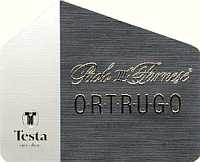
|
|
Colli Piacentini Ortrugo Paolo III Farnese 2002 |
|
| Testa (Italy) | |
| Grapes: Ortrugo | |
| Price: € 5,00 | Score: |
| The wine shows a beautiful pale straw yellow and nuances of greenish yellow, very transparent and with evident effervescence. Pleasing nose, mainly of fruit, with intense and pleasing aromas dominated by banana. There can be perceived good aromas of acacia, broom, litchi, green apple, pear and peach. The mouth reveals a pleasing effervescence and good correspondence to the nose. Crisp and intense, this wine is agreeable and balanced. The finish is persistent with pleasing flavors of banana, pear and green apple. | |
| Food Match: Aperitifs, Risotto and pasta with fish or vegetables | |
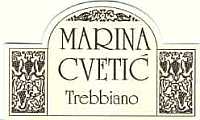
|
|
Trebbiano d'Abruzzo Marina Cvetic 2000 |
|
| Masciarelli (Italy) | |
| Grapes: Trebbiano d'Abruzzo | |
| Price: € 25,00 | Score: |
| The wine shows a golden yellow color and nuances of straw yellow, very transparent. The nose denotes an evident aroma of wood which allow anyway the perception of other aromas. There can be perceived good and intense aromas, mainly of fruit, such as banana, hawthorn, apple, hazelnut, pear, toasted and vanilla. The mouth reveals a good correspondence to the nose and an excellent balance. Alcohol, present in good quantity, is well balanced by wine's acidity. The finish is very persistent with long flavors of wood, pear and banana. A well made wine, fermented in barrique and aged for 22 months in barrique. | |
| Food Match: Roasted white meat, Soft Cheese, Stuffed pasta | |
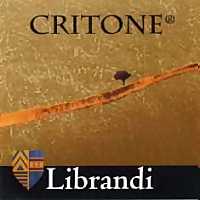
|
|
Critone 2002 |
|
| Librandi (Italy) | |
| Grapes: Chardonnay (90%), Sauvignon Blanc (10%) | |
| Price: € 6,00 | Score: |
| The wine shows a straw yellow color and nuances of straw yellow, very transparent. The nose reveals elegance, finesse and personality with a clean and intense aroma of banana followed by intense and good aromas of acacia, apricot, kiwi, litchi, apple, pear and peach. In the mouth has a good correspondence to the nose, very balanced and alcohol is well balanced by wine's acidity as well as having intense flavors. The finish is persistent with agreeable flavors of banana, kiwi, pear and peach. A truly well made wine. Critone is produced by fermentation at controlled temperature. | |
| Food Match: Crustaceans, Pasta and risotto with fish, Broiled or roasted fish | |
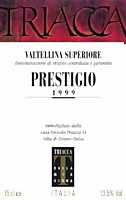
|
|
Valtellina Superiore Prestigio 1999 |
|
| Triacca (Italy) | |
| Grapes: Nebbiolo | |
| Price: € 23,00 - 30,00 | Score: |
| The wine shows a brilliant ruby red color and nuances of garnet red, moderate transparency. The nose denotes intense and clean aromas, mainly of violet followed by aromas of black cherry, strawberry jam, raspberry, licorice, blueberry and hints of black pepper. The mouth reveals a good correspondence to the nose and a slightly alcoholic attack however well balanced by tannins. The finish is persistent with pleasing flavors of violet, black cherry and strawberry jam. A well made wine produced with Nebbiolo grapes that are left on the vine to dry for 25-30 days and is aged in new barrique for 12 months and 8 months in bottle. | |
| Food Match: Hard cheese, Roasted meat, Braised meat, Stewed meat, Game | |
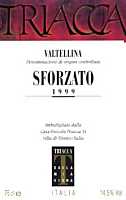
|
|
Valtellina Sforzato 1999 |
|
| Triacca (Italy) | |
| Grapes: Nebbiolo | |
| Price: € 22,00 - 28,00 | Score: |
| The wine shows a brilliant ruby red color and nuances of garnet red, moderate transparency. The nose reveals clean and intense aromas of violet and black cherry, followed by strawberry jam, raspberry, blueberry and blackberry. In the mouth denotes a slightly alcoholic attack however balanced by tannins, good correspondence to the nose, good body and intense flavors. The finish is persistent with clean flavors of violet, blackberry and blueberry. This wine is produced with dried Nebbiolo grapes and it is aged in cask for 18 months and in bottle for 3 months. | |
| Food Match: Hard cheese, Roasted meat, Braised meat, Game | |

|
|
Controguerra Rosso Lumen 1999 |
|
| Dino Illuminati (Italy) | |
| Grapes: Montepulciano (70%), Cabernet Sauvignon (30%) | |
| Price: n.d. | Score: |
| The wine has an intense ruby red color and nuances of ruby red, little transparency. The nose reveals good personality with intense, elegant and clean aromas of black cherry, cocoa, fennel, strawberry, raspberry, licorice, blackberry, coconut, plum and vanilla with hints of mint. In mouth is very balanced and very correspondent to the nose, good body and clean and intense flavors. The finish is persistent with agreeable and clean flavors of blackberry, plum and black cherry. A well made wine produced with macerating skins for 15 days and aged in barrique for about 18 months followed by an aging in bottle for 12-14 months. | |
| Food Match: Braised or stewed meat with mushrooms, Game, Roasted meat, Hard cheese | |
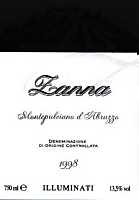
|
|
Montepulciano d'Abruzzo Zanna 1998 |
|
| Dino Illuminati (Italy) | |
| Grapes: Montepulciano | |
| Price: n.d. | Score: |
| The wine shows a firm ruby red color, moderate transparency. The nose reveals personality with clean and intense aromas such as black cherry, cherry, raspberry, blueberry, plum, vanilla and violet. The mouth is very balanced with a good correspondence to the nose. Good body, tannins are well balanced by alcohol, with intense and good flavors. The finish is persistent with flavors of plum, black cherry and blueberry. A well made wine produced with fermentation in steel tanks at controlled temperature followed by an aging for 24-26 months in casks. | |
| Food Match: Braised or stewed meat with mushrooms, Game, Roasted meat, Hard cheese | |
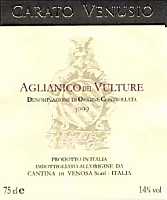
|
|
Aglianico del Vulture Carato Venusio 1999 |
|
| Cantina di Venosa (Italy) | |
| Grapes: Aglianico | |
| Price: € 13,00 | Score: |
| The wine shows a brilliant ruby red color and nuances of ruby red, moderate transparency. The nose denotes clean aromas, mainly of fruit, such as black cherry, blueberry, blackberry, plum and violet. The mouth reveals a good correspondence to the nose, good body and good balance. The finish is persistent with flavors of black cherry, blackberry and plum. Carato Venusio is aged in cask for 12-18 months followed by 6 months in bottle. | |
| Food Match: Meat and mushrooms, Hard cheese, Roasted meat, Broiled meat and barbecue | |
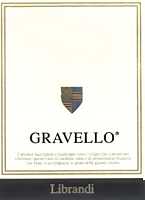
|
|
Gravello 1999 |
|
| Librandi (Italy) | |
| Grapes: Gaglioppo (60%), Cabernet Sauvignon (40%) | |
| Price: € 18,00 | Score: |
| The wine shows a ruby red color and nuances of garnet red, moderate transparency. The nose reveals an elegant personality with intense and clean aromas of black cherry, carob, chocolate, blueberry jam, strawberry, licorice, plum and vanilla followed by pleasing hints of black pepper and menthol. The mouth denotes an agreeable body and pleasing flavors, very correspondent to the nose, excellent balance and good body, with tannins well balanced by alcohol. The finish is persistent with pleasing and clean flavors of black cherry, plum and strawberry. A well made wine produced by macerating skins for 10-15 days and aged in barrique for 12 months and 6 months in bottle. | |
| Food Match: Game, Hard and piquant cheese, Roasted meat, Braised meat | |
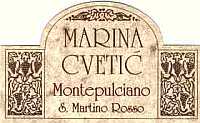
|
|
Montepulciano d'Abruzzo Marina Cvetic 1999 |
|
| Masciarelli (Italy) | |
| Grapes: Montepulciano | |
| Price: € 15,00 | Score: |
| This wine shows an intense ruby red color and nuances of ruby red, little transparency. The nose reveals great personality with intense, elegant and clean aromas. There can be perceived aromas of black cherry, chocolate, plum jam, raspberry, licorice, blackberry, black pepper, black currant and vanilla. In the mouth promptly denotes its thickness and full body, with a slightly tannic attack promptly balanced by alcohol, present in good quantity. Very good correspondence to the nose with intense and clean flavors. The finish is very persistent and long with agreeable and clean flavors of plum jam, black currant, black cherry and blackberry. A great and very well made wine. This wine is produced with a maceration of skins for 20-30 days and a fermentation on cask for about 15-20 days. | |
| Food Match: (Game, Braised meat, Stewed meat, Hard cheese | |
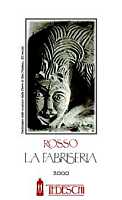
|
|
Rosso La Fabriseria 2000 |
|
| Tedeschi (Italy) | |
| Grapes: Corvina (30%), Corvinone (30%), Rondinella (30%), Cabernet Sauvignon (5%) Molinara, Rossignola, Oseleta, Negrara, Dindarella (5%) | |
| Price: € 20,00 | Score: |
| The wine shows an intense ruby red color and nuances of garnet red, moderate transparency. The nose reveals great personality with clean, elegant and intense aromas. There can be perceived aromas of cocoa, chocolate, black cherry jam, blueberry jam, plum jam, leather, licorice, blueberry, blackberry, vanilla and dried violet. In the mouth denotes an alcoholic and tannic attack however well balanced and a good correspondence to the nose. Full body and very intense flavors. The finish is very persistent with long and pleasing flavors of plum jam, black cherry jam, blackberry jam and cocoa. A great wine. La Fabriseria is aged in barrique for 1 year and for 6 months in bottle. | |
| Food Match: Game, Hard cheese, Roasted meat, Braised meat, Stewed meat | |
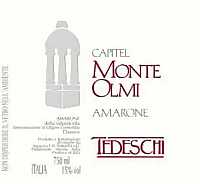
|
|
Amarone della Valpolicella Classico Capitel Monte Olmi 1999 |
|
| Tedeschi (Italy) | |
| Grapes: Corvina (30%), Corvinone (30%), Rondinella (30%), Molinara, Rossignola, Oseleta, Negrara, Dindarella, Croatina, Forselina (10%) | |
| Price: € 36,00 | Score: |
| The wine shows an intense ruby red color and nuances of garnet red, little transparency. The nose denotes a great personality with elegant and clean aromas. There can be perceived intense and good aromas of cocoa, carob, black cherry jam, raspberry jam, plum jam, leather, licorice, vanilla and violet. The mouth denotes an alcoholic and tannic attack however well balanced and with an excellent correspondence to the nose. A full bodied wine with very intense flavors. The finish is very persistent and long with clean and pleasing flavors of black cherry jam, plum and cocoa. A magnificent wine. This Amarone is aged in barrique for 2 years and for 6 months in bottle. | |
| Food Match: Game, Hard cheese, Roasted meat, Braised meat, Stewed meat | |
|
||||||||
|
DiWineTaste Polls
|
| |||||||
Privacy Policy | |||||||


| Copyright © 2002-2024 Antonello Biancalana, DiWineTaste - All rights reserved |
| All rights reserved under international copyright conventions. No part of this publication and of this WEB site may be
reproduced or utilized in any form or by any means, electronic or mechanical, without permission in writing from DiWineTaste. |